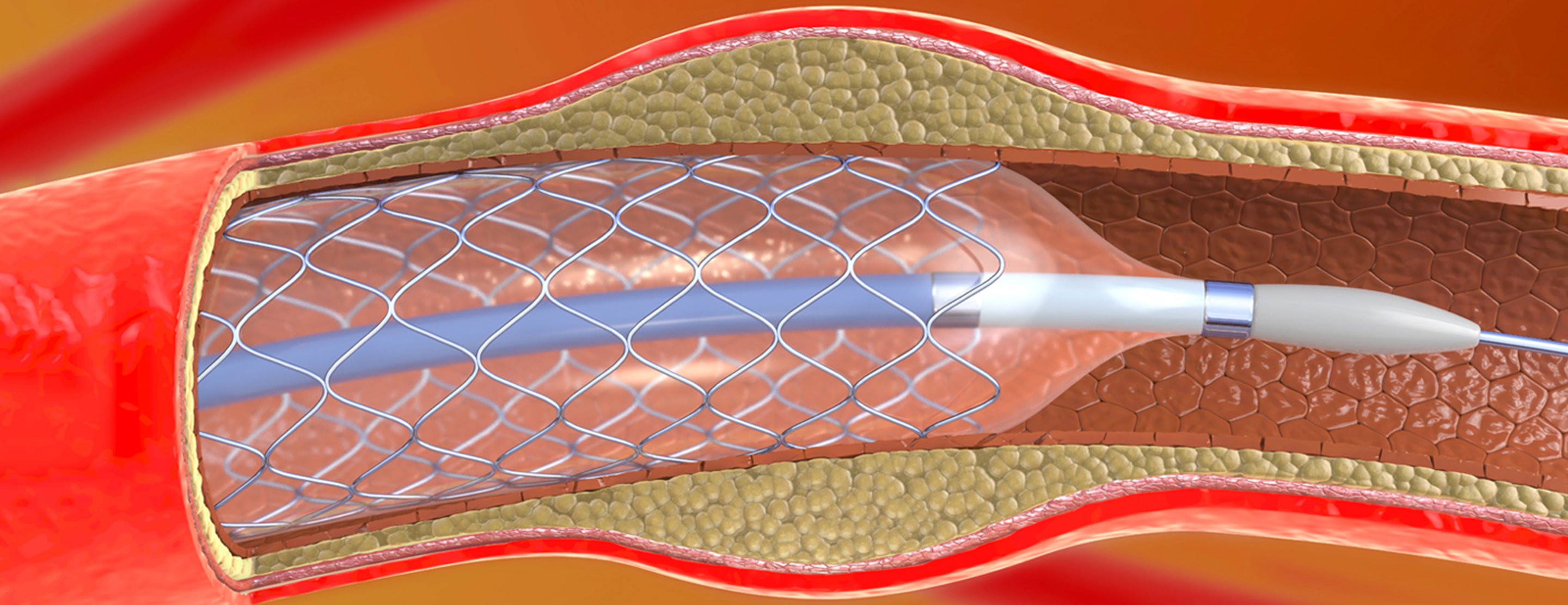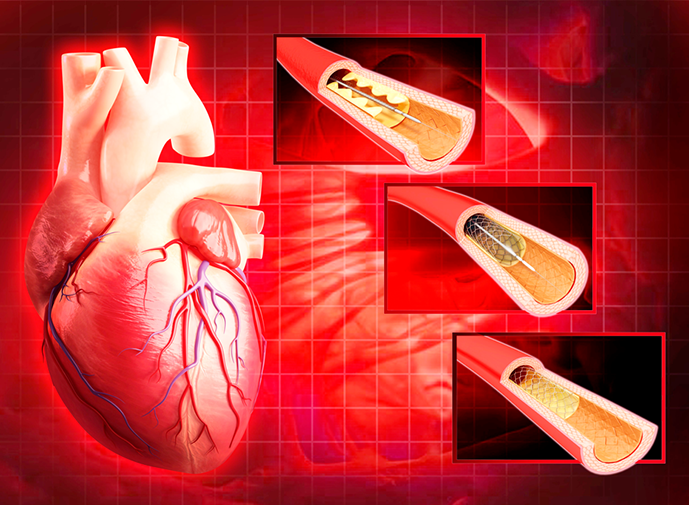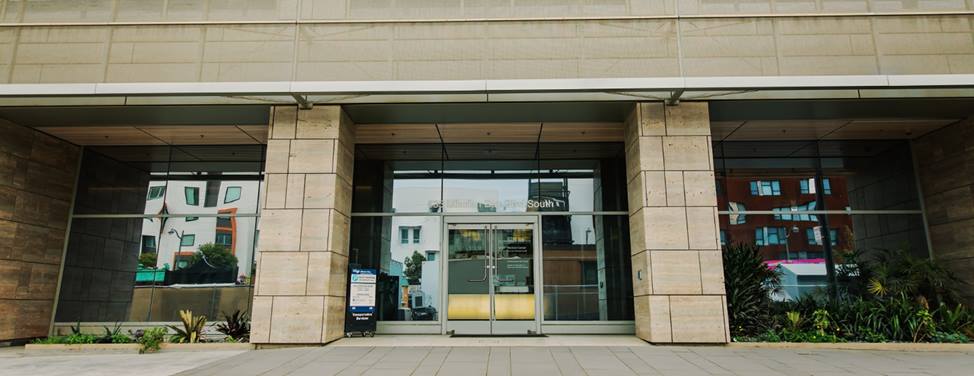What to expect
Before the procedure
- Shortly before your procedure, you may receive a sedative to help you relax. For most PCIs, patients are sedated but not asleep.
- Your hair may be clipped in the area where a catheter will be inserted, such as the groin or wrist.
- An intravenous (IV) line is placed, allowing us to give you medications quickly, if necessary.
- Electrodes will be placed on your body to monitor your heart, and a small device called a pulse oximeter may be clipped on a finger or ear to track the oxygen level in your blood.
During the procedure
- A PCI may take anywhere from one hour to three hours, depending on complexity.
- You will lie on your back on a procedure table. A local anesthetic (a medication that temporarily blocks pain signals) will be injected at the site where the catheter will be inserted.
- When the catheter reaches your heart, a contrast dye – a harmless solution that shows up well in medical imaging – will be injected, so that doctors can clearly see the vessel’s narrowed area on an X-ray. The doctors will then perform whichever type of PCI is best for your condition.
- When finished, the catheter will be withdrawn and pressure applied to the insertion site to stop the bleeding. If the catheter was inserted through your groin, you’ll need to stay flat on your back and keep your leg straight for several hours. If the catheter was inserted in your arm, it will be elevated on pillows and kept straight with a stabilizing board.
After the procedure
- We’ll take you to a recovery room for several hours of observation. You'll need to stay in bed for two to six hours, depending on your condition and the type of PCI you had.
- You may experience mild pain or an ache in your chest. If the discomfort is too much, we can give you pain medication.
- You’ll be encouraged to drink water and other fluids to help flush the contrast dye from your body.
- Some patients spend the night in the hospital for observation, some go home the same day. Your doctor will decide which option is best for you. If you go home the same day, you’ll need someone to drive you home. You should not operate a motor vehicle for 24 hours after the procedure.
At home
When you return home, keep an eye on the insertion site. A small bruise is normal, but contact your doctor for advice if you experience any of the following symptoms:
- Increased pain
- Redness
- Swelling
- Bleeding or discharge from the insertion site
- Fever or chills
You may shower 24 to 48 hours after the procedure. For five days, avoid activities that involve lifting and pulling with the wrist. During this time, there should be no strenuous exercise; playing sports, such as golf; household chores, such as vacuuming; or demanding physical tasks, such as moving furniture.
A week after your procedure, you can resume activities of moderate intensity. In fact, moderate physical activity (such as walking, swimming or using a stationary bike) at least five days a week is recommended to strengthen your heart. You may want to ask your doctor whether cardiac rehabilitation – a customized exercise and education program for improving your health – is an option for you.




















